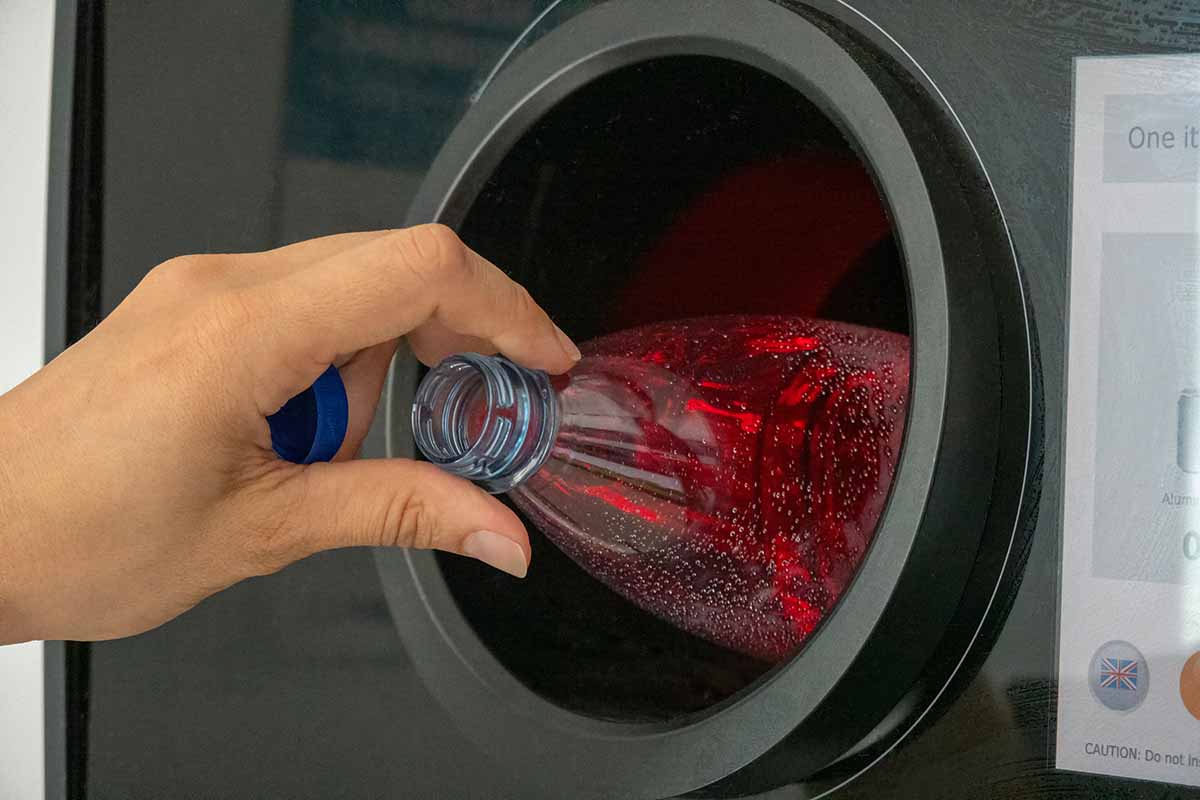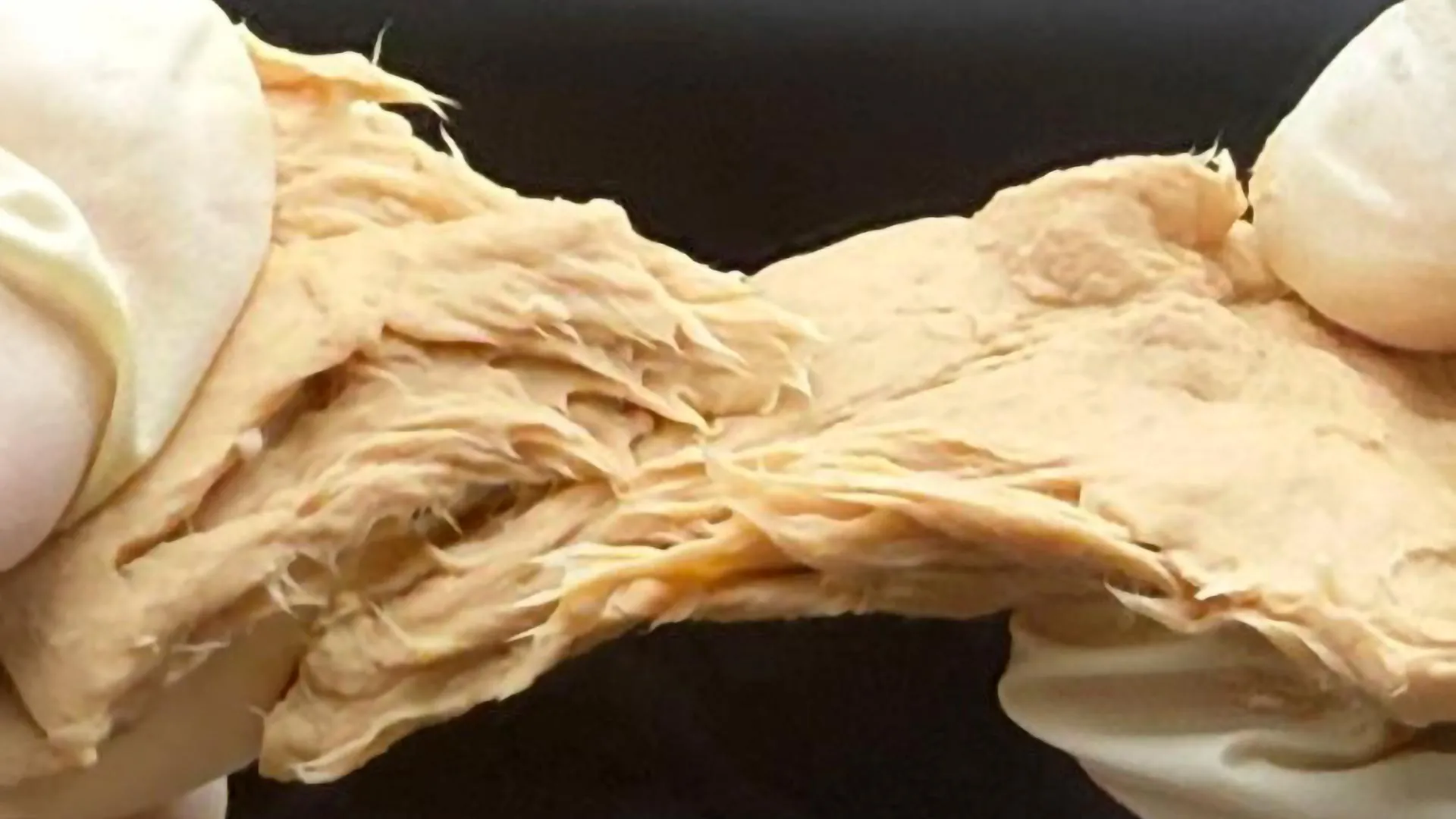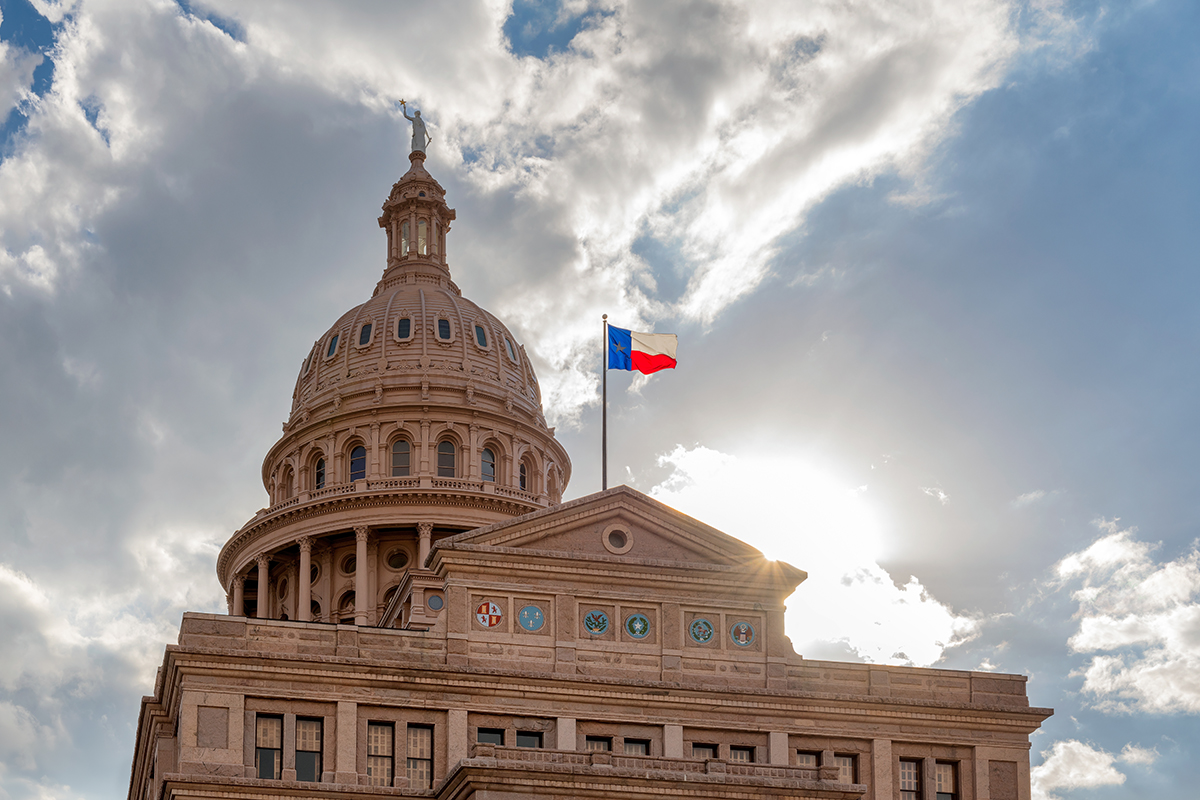Michigan’s bottle bill at a crossroads – Resource-Recycling

Report on the Status of Michigan’s Beverage Container Deposit System and Alignment with Sustainable Development Goals
Executive Summary
A recent analysis by the University of Michigan indicates a significant decline in the performance of Michigan’s 10-cent beverage container deposit system. Once a national benchmark with redemption rates exceeding 95%, the system’s effectiveness has fallen to 70.4% in 2024. This report details the system’s structural deficiencies, financial misalignments, and their collective impact on the state’s ability to meet key United Nations Sustainable Development Goals (SDGs). It outlines strategic recommendations for modernization to realign the program with principles of a circular economy, environmental stewardship, and social equity, directly supporting SDG 11, SDG 12, and SDG 13.
Analysis of System Decline and SDG Implications
Decreased Redemption Rates and Impact on SDG 12
The primary function of a deposit return system is to facilitate a circular economy, a core tenet of SDG 12: Responsible Consumption and Production. The decline in Michigan’s redemption rate represents a failure to capture a high volume of clean, valuable materials for recycling. This undermines efforts to reduce waste generation and promote sustainable management of natural resources. The system’s stagnation since the 1990s, particularly the lack of convenient redemption centers, has hindered its contribution to sustainable production patterns.
Financial Incentives and Resource Allocation
The management of unredeemed deposits, or escheats, presents a significant misalignment with sustainability objectives.
- Misaligned Incentives: The current escheat distribution model financially benefits stakeholders when redemption rates are low, creating a “backward incentive” that discourages system optimization and works against the goals of SDG 12.
- Suboptimal Funding: An investigation into the spending by Environment, Great Lakes and Energy (EGLE) reveals that only 2-3% of escheat funds are directed toward recycling initiatives. The vast majority is used for environmental cleanup, addressing the consequences of waste rather than investing in preventative recycling infrastructure. This represents a missed opportunity to fund projects that advance SDG 11 (Sustainable Cities and Communities) and SDG 13 (Climate Action) by improving waste management systems and reducing emissions from virgin material production.
Recommendations for Modernization to Achieve Sustainability Targets
Operational and Policy Reforms
To restore the system’s efficacy and enhance its contribution to the SDGs, the report proposes several key reforms.
- Implement Universal Redemption: Requiring all retailers to accept all container brands would improve consumer convenience and accessibility, boosting redemption rates. A voluntary, industry-led agreement is proposed as an immediate step, exemplifying SDG 17 (Partnerships for the Goals).
- Reinvest Escheats into System Modernization: The primary recommendation is to redirect unredeemed deposits into a Statewide Bottle Deposit Modernization Fund. This fund would align financial incentives with high performance and support:
- Infrastructure grants for retailers, especially in underserved areas.
- Technology upgrades to improve efficiency.
- Public education campaigns to increase participation.
This strategic reinvestment is critical for building the infrastructure needed to support SDG 11, SDG 12, and climate goals.
- Ensure Equitable Expansion: Any expansion of the system, such as adding water bottles, must include protective measures to avoid disproportionately impacting vulnerable populations. This aligns with SDG 1 (No Poverty) and SDG 10 (Reduced Inequalities). Safeguards should include ensuring accessible redemption options in all communities and clear public communication.
Learning from Interstate Best Practices
The report highlights successful models from other states that Michigan could adopt to advance its sustainability agenda.
- Oregon: This state demonstrates how a deposit system can successfully coexist with broader Extended Producer Responsibility (EPR) policies, a key strategy for SDG 12. Its network of redemption centers, funded by a distributor cooperative, also provides a model for relieving burdens on retailers and potentially creating green jobs, contributing to SDG 8 (Decent Work and Economic Growth).
- Maine: The state’s commingling agreement, where a co-op collects materials by type rather than brand, serves as a practical example of universal redemption. This collaborative approach, a form of SDG 17 partnership, could be adapted for Michigan’s existing third-party collection framework.
Conclusion
Michigan’s beverage container deposit system, while historically successful, now requires significant modernization to fulfill its potential as a tool for achieving a circular economy. By implementing reforms such as universal redemption, reinvesting escheats into recycling infrastructure, and ensuring equitable policies, the state can restore high redemption rates. These actions are essential for Michigan to make meaningful progress on its commitments to the Sustainable Development Goals, particularly those related to responsible consumption, sustainable communities, climate action, and social equity.
Analysis of Sustainable Development Goals in the Article
1. Which SDGs are addressed or connected to the issues highlighted in the article?
- SDG 6: Clean Water and Sanitation – The article touches upon the potential impact of policy changes on water-insecure households.
- SDG 9: Industry, Innovation, and Infrastructure – The need to modernize the recycling system’s infrastructure is a central theme.
- SDG 10: Reduced Inequalities – The article highlights concerns about the policy’s effects on low-income communities.
- SDG 12: Responsible Consumption and Production – The core topic is the state’s bottle deposit system, which directly relates to recycling and waste reduction.
- SDG 13: Climate Action – The article explicitly links the success of the recycling program to the state’s climate goals.
- SDG 15: Life on Land – The original intent of the law to reduce litter and the use of funds for environmental cleanup connect to this goal.
- SDG 17: Partnerships for the Goals – The report suggests various forms of collaboration among stakeholders to improve the system.
2. What specific targets under those SDGs can be identified based on the article’s content?
- Target 12.5: By 2030, substantially reduce waste generation through prevention, reduction, recycling and reuse.
The entire article focuses on Michigan’s bottle deposit system, a program designed to increase the recycling of beverage containers. The discussion about declining redemption rates (from 95% to 70.4%) and recommendations to improve them, such as “universal redemption,” directly addresses the goal of increasing recycling to reduce waste. - Target 15.1: By 2020, ensure the conservation, restoration and sustainable use of terrestrial and inland freshwater ecosystems and their services, in particular forests, wetlands, mountains and drylands, in line with obligations under international agreements.
The article states the deposit law was “initially intended to address pervasive roadside litter and reduce cleanup costs.” Furthermore, it details how 75% of unredeemed deposits are allocated to the “Cleanup & Redevelopment Trust Fund,” with nearly all of this fund used for “environmental cleanup.” This directly contributes to the restoration of terrestrial ecosystems by removing waste. - Target 9.4: By 2030, upgrade infrastructure and retrofit industries to make them sustainable, with all countries taking action in accordance with their respective capabilities.
The report advocates for modernizing a system that has been “largely unchanged since the 1990s.” The specific recommendation to establish a “Statewide Bottle Deposit Modernization Fund” to provide “grants for infrastructure upgrades and technology” for retailers aligns perfectly with this target of upgrading infrastructure for sustainability. - Target 10.2: By 2030, empower and promote the social, economic and political inclusion of all, irrespective of age, sex, disability, race, ethnicity, origin, religion or economic or other status.
The article raises concerns that expanding the deposit system to include water bottles “could disproportionately affect low-income and water-insecure households.” The recommendation that “any expansion must be paired with strong protective measures to safeguard these communities” by ensuring “accessible and convenient redemption options” speaks directly to preventing policies that would negatively impact and exclude vulnerable economic groups. - Target 13.3: Improve education, awareness-raising and human and institutional capacity on climate change mitigation, adaptation, impact reduction and early warning.
The article explicitly states that the program’s faltering state threatens its “ability to support Michigan’s recycling and climate goals.” By analyzing the system’s failures and proposing solutions, the University of Michigan report serves to raise awareness and build institutional capacity for effective recycling, which is a recognized form of climate change mitigation. - Target 6.b: Support and strengthen the participation of local communities in improving water and sanitation management.
The concern for “water-insecure residents” when considering adding a deposit to water bottles is relevant to this target. Ensuring that policies do not create barriers to accessing a fundamental resource like water is a key aspect of sustainable water management that considers the needs of local communities. - Target 17.17: Encourage and promote effective public, public-private and civil society partnerships, building on the experience and resourcing strategies of partnerships.
The article highlights several partnership models. It recommends a “voluntary, industry-led agreement on universal redemption” and notes that stakeholder consensus supports reinvesting funds into the system. It also points to successful partnership examples in other states, such as Oregon’s “cooperative of distributors and retailers” and Maine’s “distributor co-op,” as models for Michigan.
3. Are there any indicators mentioned or implied in the article that can be used to measure progress towards the identified targets?
- Indicator for Target 12.5: National recycling rate, tons of material recycled.
The article provides a direct, quantifiable indicator: the “redemption rate” of beverage containers. It specifies that this rate has dropped from a high of “95%” to “70.4% in 2024.” This percentage serves as a direct measure of the recycling rate for these specific materials. - Indicator for Target 15.1: Progress towards sustainable forest management.
A financial indicator is provided through the amount of funding directed towards environmental cleanup. The article states that expenditures from the Cleanup & Redevelopment Trust Fund, sourced from unredeemed deposits, rose from “$26 million in 2014 to more than $114 million in 2024.” This funding amount can be used to measure the resources allocated to land restoration and cleanup activities. - Indicator for Target 9.4: CO2 emission per unit of value added.
While not a current indicator, the article implies a future one. The proposed “Statewide Bottle Deposit Modernization Fund” would use escheats for “grants for infrastructure upgrades and technology.” The amount of money allocated to and spent by this fund would be a clear indicator of investment in sustainable infrastructure. - Indicator for Target 10.2: Proportion of people living below 50 per cent of median income, by sex, age and persons with disabilities.
The article implies the need for an indicator related to accessibility. It suggests progress could be measured by the implementation of “accessible and convenient redemption options, such as universal and bulk redemption, particularly in under-resourced areas.” An indicator could be the number or percentage of redemption locations per capita in low-income versus high-income areas.
4. Table of SDGs, Targets, and Indicators
| SDGs | Targets | Indicators Identified in the Article |
|---|---|---|
| SDG 12: Responsible Consumption and Production | 12.5: Substantially reduce waste generation through recycling. | The beverage container redemption rate, which fell from 95% to 70.4%. |
| SDG 15: Life on Land | 15.1: Ensure the conservation and restoration of terrestrial ecosystems. | The amount of money from unredeemed deposits allocated to the Cleanup & Redevelopment Trust Fund ($114 million in 2024). |
| SDG 9: Industry, Innovation, and Infrastructure | 9.4: Upgrade infrastructure to make it sustainable. | Proposed use of a “Statewide Bottle Deposit Modernization Fund” to provide grants for infrastructure upgrades and technology. |
| SDG 10: Reduced Inequalities | 10.2: Promote the social and economic inclusion of all. | The need for “strong protective measures” and “accessible and convenient redemption options” to avoid burdening low-income households. |
| SDG 13: Climate Action | 13.3: Improve education and institutional capacity on climate change mitigation. | The connection between the recycling program’s success and the state’s “climate goals.” |
| SDG 17: Partnerships for the Goals | 17.17: Encourage effective public-private and civil society partnerships. | Recommendations for an “industry-led agreement” and examples of distributor/retailer cooperatives from other states. |
Source: resource-recycling.com
What is Your Reaction?
 Like
0
Like
0
 Dislike
0
Dislike
0
 Love
0
Love
0
 Funny
0
Funny
0
 Angry
0
Angry
0
 Sad
0
Sad
0
 Wow
0
Wow
0
















































/environment-climate-change-and-health-(ech)/water-sanitation-hygiene-and-health-(wsh)/landfill-tuvalu-36092.tmb-1200v.jpg?sfvrsn=5c21fe40_1#)

.jpg.webp?itok=0ZsAnae9#)
























